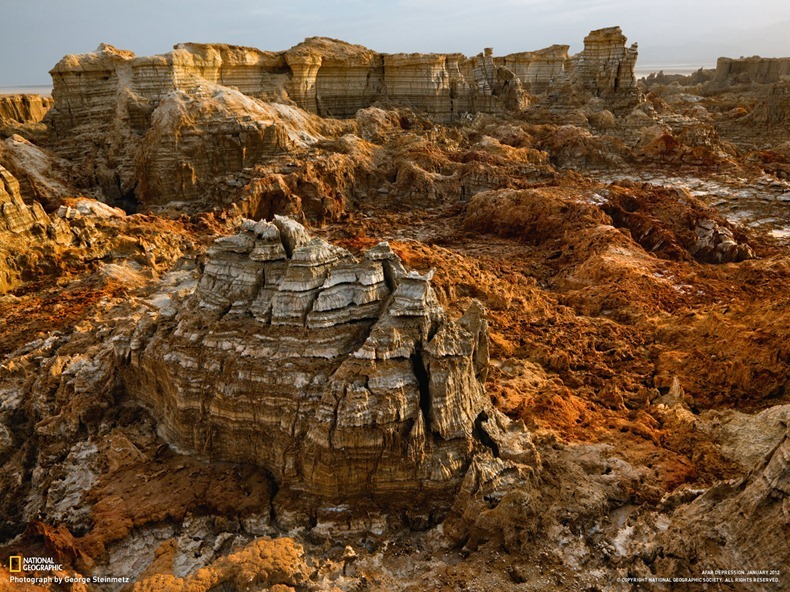His expeditions culminated in a gorgeous book his first - calledAfrican Air.
George Steinmetz is a regular contributor to National Geographic and GEO Magazines in Germany.
Born in Beverly Hills in 1957, George graduated from Stanford University with a degree in Geophysics.
He began his career in photography after hitchhiking through Africa for 28 months.
For centuries salt blocks, called amole, were used throughout Ethiopia as money.
Workers at Lake Afrera process raw salt.
Production was temporarily halted last year when a volcano in neighboring Eritrea erupted, blanketing the salt in ash.
At a salt-extraction facility in northern Ethiopia, briny water is pumped from hypersalty Lake Afrera into evaporation ponds.
Ancient lava flows near the Awash River in Ethiopia resemble the vertebrae of a fossilized beast.
Sulfur and algae turn hot springs into pools of living color.
The water is condensation from hot gases rising from magma chambers.
As the water evaporates, salts and minerals form a vivid crust.
Groundwater heated to boiling goes up in steam at a geyser field northwest of Lake Abbe.
A lake of lava bubbles atop Erta Ale, the region’s most active volcano.
Restless faults have tilted these massive slabs of bedrock like dominoes.
One of the canyons provides a highway corridor for truck traffic moving between Ethiopia and Djibouti.
The tortuous shapes are the work of storms and flash floods.
Spires called travertine chimneys are fashioned by mineral-bearing vapor rising from underground magma chambers.
As the vapor evaporates, it deposits minerals around each vent.
Djibouti’s Lake Assal is one of the world’s saltiest lakes.
Lake Assal marks Africa’s lowest point, 512 feet below sea level.
A Djibouti-based salt-production company calls the lake the “largest undeveloped salt reserve in the world.”












